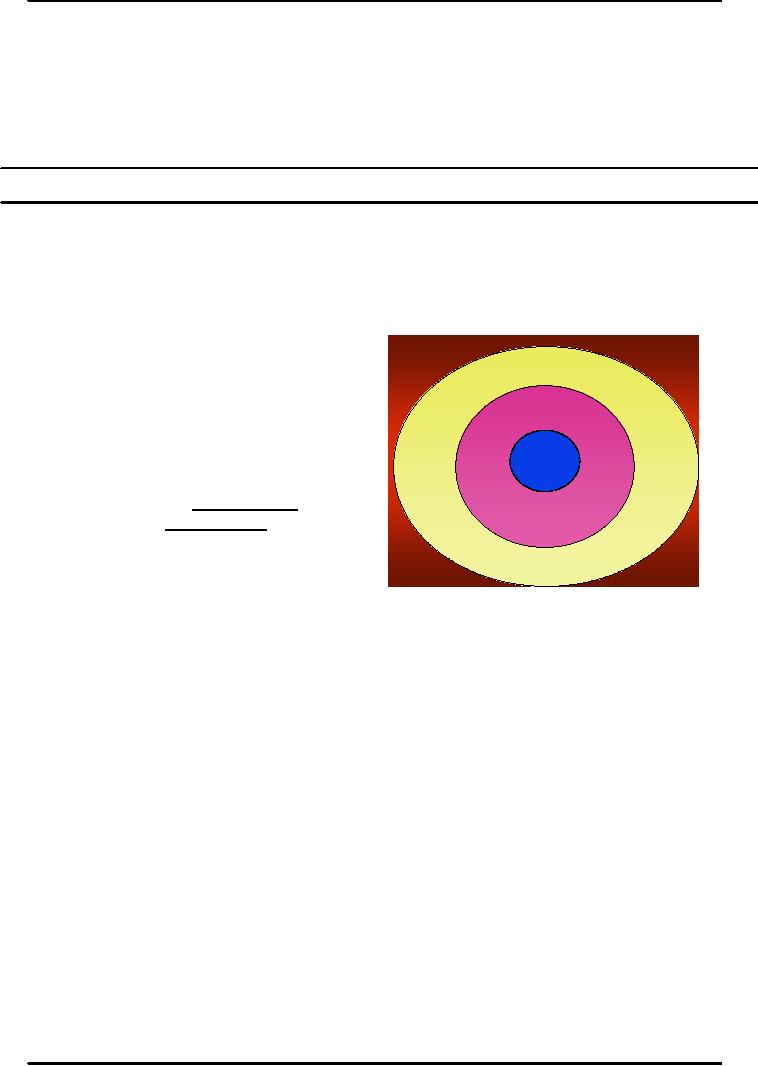 |

Principles
of Marketing MGT301
VU
Lesson
10
Lesson
overview and learning objectives:
In
last Lesson we discussed the
marketing microenvironment factors or forces. Today we
will
continue
the topic of Marketing
environment and will discuss
the Macro environmental
factors in
detail
so our today's topic
is:
B.
MARKETING
MACRO ENVIRONMENT
Marketing
Environment
The
Company's Macro environment
The
company and all of the
other actors operate in a
larger macro environment of forces
that
shape
opportunities and pose threats to
the company. There are six
major forces (outlined
below)
in
the company's macro environment.
There are six major forces
(outlined below) in
the
company's
macro environment.
Demographic
a.
Demographic.
b.
Economic.
Company
c.
Natural.
Cultural
Economic
d.
Technological.
Suppliers
Publics
Company
e.
Political.
f.
Cultural.
Political
Competitors
Customers
Natural
a.
Demographic
Environment
Intermediaries
Demography
is the
study of human populations
in
Technological
terms
of size, density, location,
age, sex, race,
occupation,
and other statistics. It is of
major
interest
to marketers because it involves
people and people make up
markets. Demographic trends
are
constantly changing. Some more
interesting ones are.
1).
The world's population
(though not all countries)
rate is growing at an explosive
rate
that
will soon exceed food supply
and ability to adequately
service the population. The
greatest
danger
is in the poorest countries where poverty
contributes to the difficulties. Emerging
markets
such
as China are receiving increased
attention from global
marketers.
2).
The most important
trend is the changing age
structure of the population.
The
population
is aging because of a slowdown in
the birth rate (in
this country) and life
expectancy is
increasing.
The baby
boomers following
World War II have produced a
huge "bulge" in our
population's
age distribution. The new
prime market is the middle
age group (in the
future it will
be
the senior citizen group).
There are many subdivisions of
this group.
a).
Generation X--this group
lies in the shadow of the
boomers and lack
obvious
distinguishing
characteristics. They are a
very cynical group because of
all the difficulties that
have
surrounded
and impacted their
group.
b).
Echo
boomers (baby
boomlets) are the large
growing kid and teen market.
This group
is
used to affluence on the
part of their parents (as
different from the Gen
Xers). One
distinguishing
characteristic is their utter
fluency and comfort with
computer, digital, and
Internet
technology
(sometimes called
Net-Gens).
c).
Generational marketing is possible,
however, caution must be
used to avoid
generational
alienation.
Many
in the modern family now
"telecommute"--work at home or in a remote
office and conduct
their
business using fax, cell phones, modem, or
the Internet In general, the
population is
45

Principles
of Marketing MGT301
VU
becoming
better educated. The work
force is be-coming more white-collar.
Products such as
books
and education services appeal to groups
following this trend.
Technical skills (such as in
computers)
will be a must in the
future. The final
demographic trend is the
increasing ethnic and
racial
diversity of the population.
Diversity is a force that
must be recognized in the
next decade.
However,
companies must recognize
that diversity goes beyond
ethnic heritage. One
the
important
markets of the future are
that disabled people (a market
larger any of our
ethnic
minority
groups).
b.
Economic Environment
The
economic
environment includes those
factors that affect consumer purchasing
power and spending
patterns.
Major economic trends in the
United States
include:
1).
Personal consumption (along with
personal debt) has gone up
(1980s) and the
early
1990s
brought recession that has
caused adjustments both personally and
corporately in this
country.
Today, consumers are more
careful shoppers.
2).
Value
marketing (trying
to offer the consumer greater value
for their dollar) is a
very
serious
strategy in the 1990s. Real
income is on the rise again
but is being carefully
guarded by a
value-conscious
consumer.
3).
Income
distribution is
still very skewed in the U.
S. and all classes have
not shared in
prosperity.
In addition, spending patterns show
that food, housing, and
transportation still
account
for the majority of consumer dollars. It
is also of note that
distribution of income has
created
a "two-tiered market" where there
are those that are affluent
and less affluent.
Marketers
must
carefully monitor economic changes so
they will be able to prosper
with the trend, not
suffer
from
it.
c.
Natural
Environment
The
natural
environment involves
natural resources that are
needed as inputs by marketers or
that are
affected
by marketing activities. During the
past two decades
environmental concerns have
steadily
grown. Some trend analysts
labeled the specific areas
of concern were:
1).
Shortages
of raw materials. Staples
such as air, water, and wood
products have been
seriously
damaged and non-renewable such as
oil, coal, and various minerals
have been seriously
depleted
during industrial expansion.
2).
Increased
pollution is a
worldwide problem. Industrial
damage to the environment
is
very
serious. Far-sighted companies
are becoming "environmentally friendly"
and are producing
environmentally
safe and recyclable or
biodegradable goods. The
public response to
these
companies
is encouraging. However, lack of
adequate funding, especially in
third world
countries,
is a major barrier.
3).
Government
intervention in
natural resource management
has caused
environmental
concerns
to be more practical and necessary in
business and industry.
Leadership, not
punishment,
seems to be the best policy
for long-term results. Instead of
opposing regulation,
marketers
should help develop solutions to
the material and energy problems facing
the world.
4).
Environmentally
sustainable strategies. The
so-called green movement
has
encouraged
or even demanded that firms
produce strategies that are
not only
environmentally
friendly
but are also environmentally
proactive. Firms are beginning to
recognize the link
between
a
healthy economy and a
healthy environment.
d.
Technological
Environment
The
technological
environment includes forces
that create new technologies,
creating new product
and
market
opportunities.
1).
Technology is perhaps the
most dramatic force shaping
our destiny.
2).
New technologies create new
markets and
opportunities.
3).
The following trends are
worth watching:
46

Principles
of Marketing MGT301
VU
a).
Faster pace of technological
change. Products are being
technologically outdated at
a
rapid pace.
b).
There seems to be almost unlimited
opportunities being developed
daily. Consider
the
expanding fields of health care, the
space shuttle, robotics, and
biogenetic industries.
c).
The challenge is not
only technical but also
commercial--to make practical,
affordable
versions of products.
d).
Increased regulation. Marketers should be
aware of the regulations
concerning
product
safety, individual privacy, and
other areas that affect
technological changes. They
must
also
be alert to any possible negative aspects
of an innovation that might
harm users or arouse
opposition.
e.
Political
Environment
The
political
environment includes
laws, government agencies,
and pressure groups that
influence and
limit
various organizations and individuals in a
given society. Various forms of
legislation regulate
business.
1).
Governments develop public
policy to
guide commerce--sets of laws
and regulations
limiting
business for the good of
society as a whole.
2).
Almost every marketing activity is subject to a wide
range of laws and
regulations.
Some
trends in the political environment
include:
1).
Increasing legislation to:
a).
Protect
companies from
each other.
b).
Protecting
consumers from
unfair business
practices.
c).
Protecting
interests of society against
unrestrained business behavior.
2).
Changing government agency enforcement.
New laws and their
enforcement will
continue
or increase. (See Table 3.2
for the various acts used to
regulate and protect
commerce
and
our economy.)
3).
Increased emphasis on ethics
and socially responsible
actions. Socially responsible
firms
actively
seek out ways to protect
the long-run interests of
their consumers and the
environment.
a).
Enlightened companies encourage
their managers to look
beyond regulation and
"do
the
right thing."
b).
Recent scandals have
increased concern about
ethics and social
responsibility.
c).
The boom in e-commerce and
Internet marketing has created a
new set of social
and
ethical
issues. Concerns are Privacy, Security,
Access by vulnerable or unauthorized
groups.
f.
Cultural
Environment
The
cultural
environment is
made up of institutions and
other forces that affect
society's basic
values,
perceptions,
preferences, and behaviors. Certain
cultural characteristics can
affect marketing
decision-making.
Among the most dynamic
cultural characteristics
are:
1).
Persistence of cultural values.
People's core beliefs and
values have a high degree
of
persistence.
Core
beliefs
and values are passed on
from parents to children and
are reinforced by
schools,
churches, business, and
government.
Secondary
beliefs
and values are more open to
change.
2).
Shifts in secondary cultural
values. Since secondary
cultural values and beliefs
are open
to
change, marketers want to spot
them and be able to
capitalize on the change
potential. Society's
major
cultural views are expressed
in:
a).
People's
views of themselves. People
vary in their emphasis on
serving
themselves
versus serving others. In the
1980s, personal ambition and
materialism increased
dramatically,
with significant implications
for marketing. The leisure
industry was a chief
beneficiary.
47

Principles
of Marketing MGT301
VU
b).
People's
views of others. Observers
have noted a shift from a
"me-society" to a
"we-society."
Consumers are spending more
on products and services
that will improve their
lives
rather
than their image.
c).
People's
views of organizations. People
are willing to work for
large
organizations
but expect them to become
increasingly socially responsible.
Many
companies are linking
themselves to worthwhile causes.
Honesty in appeals is
a
must.
d).
People's
views of society. This
orientation influences consumption
patterns.
"Buy
American" versus buying
abroad is an issue that will
continue into the next
decade.
e).
People's
view of nature. There
is a growing trend toward
people's feeling of
mastery
over nature through
technology and the belief
that nature is bountiful.
However, nature is
finite.
Love of nature and sports
associated with nature are
expected to be significant trends in
the
next
several years.
f).
People's
views of the universe. Studies
of the origin of man,
religion, and
thought-provoking
ad campaigns are on the
rise. Currently, Americans are on a
spiritual journey.
This
will probably take the
form of "spiritual
individualism."
48
Table of Contents:
- PRINCIPLES OF MARKETING:Introduction of Marketing, How is Marketing Done?
- ROAD MAP:UNDERSTANDING MARKETING AND MARKETING PROCESS
- MARKETING FUNCTIONS:CUSTOMER RELATIONSHIP MANAGEMENT
- MARKETING IN HISTORICAL PERSPECTIVE AND EVOLUTION OF MARKETING:End of the Mass Market
- MARKETING CHALLENGES IN THE 21st CENTURY:Connections with Customers
- STRATEGIC PLANNING AND MARKETING PROCESS:Setting Company Objectives and Goals
- PORTFOLIO ANALYSIS:MARKETING PROCESS,Marketing Strategy Planning Process
- MARKETING PROCESS:Analyzing marketing opportunities, Contents of Marketing Plan
- MARKETING ENVIRONMENT:The Companyís Microenvironment, Customers
- MARKETING MACRO ENVIRONMENT:Demographic Environment, Cultural Environment
- ANALYZING MARKETING OPPORTUNITIES AND DEVELOPING STRATEGIES:MIS, Marketing Research
- THE MARKETING RESEARCH PROCESS:Developing the Research Plan, Research Approaches
- THE MARKETING RESEARCH PROCESS (Continued):CONSUMER MARKET
- CONSUMER BUYING BEHAVIOR:Model of consumer behavior, Cultural Factors
- CONSUMER BUYING BEHAVIOR (CONTINUED):Personal Factors, Psychological Factors
- BUSINESS MARKETS AND BUYING BEHAVIOR:Market structure and demand
- MARKET SEGMENTATION:Steps in Target Marketing, Mass Marketing
- MARKET SEGMENTATION (CONTINUED):Market Targeting, How Many Differences to Promote
- Product:Marketing Mix, Levels of Product and Services, Consumer Products
- PRODUCT:Individual product decisions, Product Attributes, Branding
- PRODUCT:NEW PRODUCT DEVELOPMENT PROCESS, Idea generation, Test Marketing
- NEW PRODUCT DEVELOPMENT:PRODUCT LIFE- CYCLE STAGES AND STRATEGIES
- KEY TERMS:New-product development, Idea generation, Product development
- Price the 2nd P of Marketing Mix:Marketing Objectives, Costs, The Market and Demand
- PRICE THE 2ND P OF MARKETING MIX:General Pricing Approaches, Fixed Cost
- PRICE THE 2ND P OF MARKETING MIX:Discount and Allowance Pricing, Segmented Pricing
- PRICE THE 2ND P OF MARKETING MIX:Price Changes, Initiating Price Increases
- PLACE- THE 3RD P OF MARKETING MIX:Marketing Channel, Channel Behavior
- LOGISTIC MANAGEMENT:Push Versus Pull Strategy, Goals of the Logistics System
- RETAILING AND WHOLESALING:Customer Service, Product Line, Discount Stores
- KEY TERMS:Distribution channel, Franchise organization, Distribution center
- PROMOTION THE 4TH P OF MARKETING MIX:Integrated Marketing Communications
- ADVERTISING:The Five Mís of Advertising, Advertising decisions
- ADVERTISING:SALES PROMOTION, Evaluating Advertising, Sales Promotion
- PERSONAL SELLING:The Role of the Sales Force, Builds Relationships
- SALES FORCE MANAGEMENT:Managing the Sales Force, Compensating Salespeople
- SALES FORCE MANAGEMENT:DIRECT MARKETING, Forms of Direct Marketing
- DIRECT MARKETING:PUBLIC RELATIONS, Major Public Relations Decisions
- KEY TERMS:Public relations, Advertising, Catalog Marketing
- CREATING COMPETITIVE ADVANTAGE:Competitor Analysis, Competitive Strategies
- GLOBAL MARKETING:International Trade System, Economic Environment
- E-MARKETING:Internet Marketing, Electronic Commerce, Basic-Forms
- MARKETING AND SOCIETY:Social Criticisms of Marketing, Marketing Ethics
- MARKETING:BCG MATRIX, CONSUMER BEHAVIOR, PRODUCT AND SERVICES
- A NEW PRODUCT DEVELOPMENT:PRICING STRATEGIES, GLOBAL MARKET PLACE